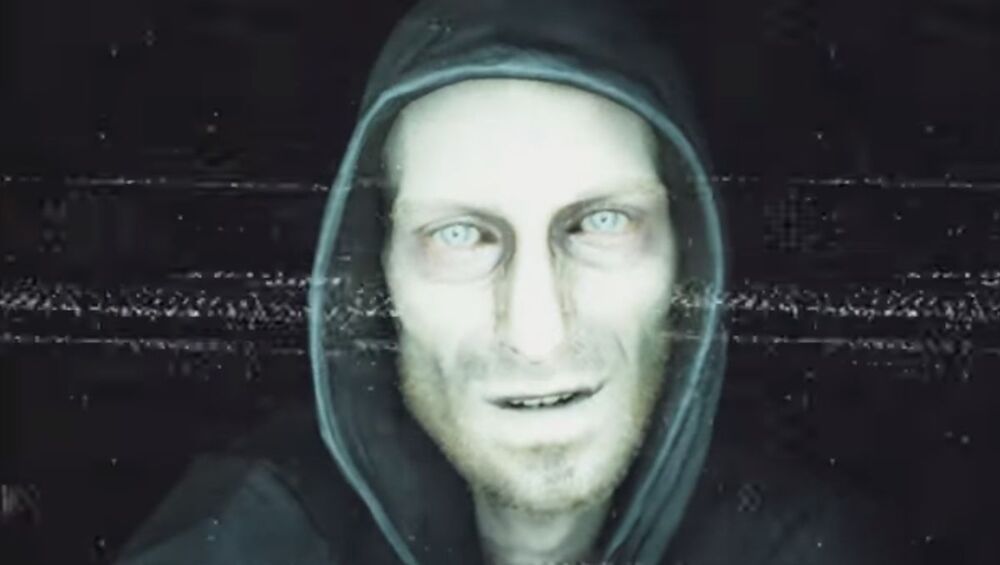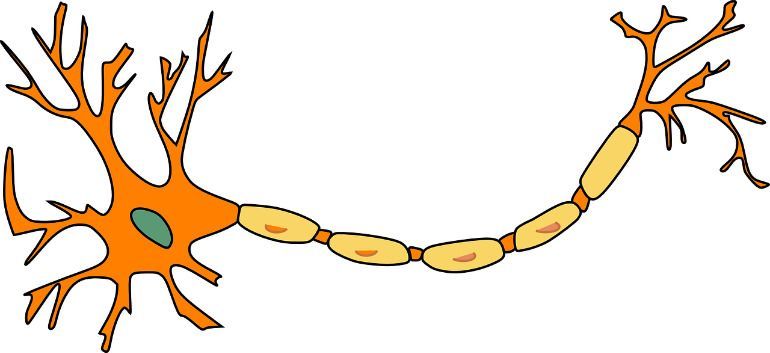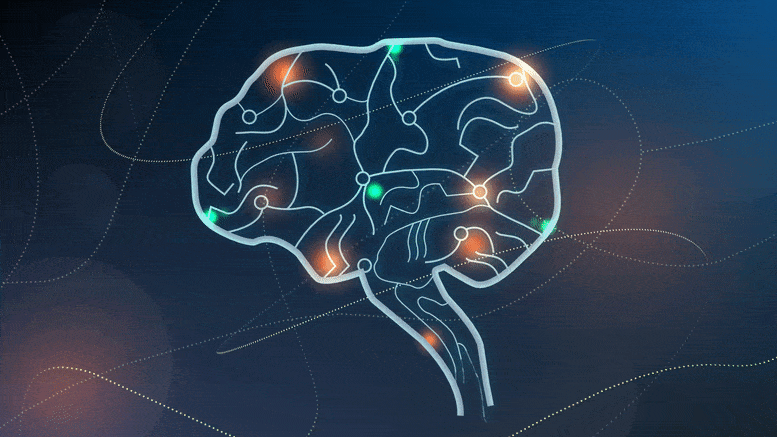Some scientists believe that the ability of animals to store memory came from a virus that infected a common ancestor hundreds of millions of years ago. 😃
This study is radically changing how we view the process of evolution.
Some scientists believe that the ability of animals to store memory came from a virus that infected a common ancestor hundreds of millions of years ago. 😃
This study is radically changing how we view the process of evolution.

Restoration of lost motor function after stroke is typically accomplished after strenuous rehabilitation therapy lasting for over months. However, new research published by a group led by Yukio Nishimura, the project leader of the Neural Prosthesis Project, Tokyo Metropolitan Institute of Medical Science showed that an artificial neural connection (ANC)*1 successfully allowed a new cortical site, previously unassociated with hand movements, to regain control of a paralyzed hand in a matter of minutes.
In this research, experimental animals regained voluntary control of a paralyzed hand about ten minutes after establishment of an ANC. Animals engaged in learning with a functional ANC showed variable levels of input signals provided by the cerebral cortex*2 as hand movement improved. Specifically, the activated area of the cortex became more focused as control of hand movements improved.
Through this training of various areas of the cerebral cortex, the research team successfully imparted a new ability to control paralyzed hands via an ANC, even if those areas were not involved in hand control prior to the stroke. Examples of such regions include areas of the cortex that controls the movement of other body parts such as the face or shoulder, and even the somatosensory cortex, which is responsible for tactile and proprioception processing and is normally not associated with motor control. This finding suggests that an ANC can impart new motor control functions to any cortical region.
This is the TMC DUMONT, which is a concept art motorcycle, designed and built by Retired F1 driver and designer Tarso Marques.
This ultra sleek, hubless wheel, motorcycle, is powered by an actual 300 hp, six-cylinder, Rolls-Royce Continental Aircraft Engine from 1960.
The TMC Dumont made its debut at the Daytona Bike Week in 2018, the most important customization event in the world, and won best in show out of 100 competing bikes.
The bike may be impractical for everyday use, but if we only ever create things that are practical, what’s the point of having an imagination and following a dream.
Thanks for watching
#TMCDumont #Motorbike #Motorcycle
SUBSCRIBE for the OUTDOOR TEST ► http://goo.gl/MU4hNA
Music credits below:
Become a Hacksmith member get exclusive perks! ► https://www.youtube.com/channel/UCjgpFI5dU-D1-kh9H1muoxQ/join
►Early video access
►Project design files (solidworks)
►Merch Discounts
►Colaborate with us on our videos
SOCIAL
Website ► http://www.hacksmith.tech
Facebook ► http://www.facebook.com/thehacksmith
Instagram ► http://www.instagram.com/thehacksmith
Twitter ► http://twitter.com/thehacksmith
Patreon ► http://www.patreon.com/thehacksmith
Discord ► https://discordapp.com/invite/thehacksmith
Merch ► https://www.hacksmith.store
SOFTWARE:
Video Review / Collaboration ► http://r.frame.io/pZq3N
Video Editing ► Adobe Premiere
CAD ► Solidworks
CAMERA GEAR:
Highspeed Cam — Chronos 1.4 ► https://goo.gl/t7eCGG
Main shooter — Panasonic GH5s ► https://bhpho.to/2Fjd80N
Phone — Samsung Note 8 ► https://bhpho.to/2DnDicX
B Camera — Sony RX10ii ► https://bhpho.to/2Dp9r3y
Camcorder — Sony Handycam ► https://bhpho.to/2FDnq81
Slow Motion (960fps) — Sony RX10ii ► https://bhpho.to/2Dp9r3y
Slow Motion (240fps) — Panasonic GH5s ► https://bhpho.to/2Fjd80N
Action Cam — GoPro ► https://bhpho.to/2FxXDC4
Steadicam — Osmo ► https://bhpho.to/2GreBj2
Main mic — Sennheiser ► https://bhpho.to/2DsR8ec
Bendy Tripod ► https://bhpho.to/2FyLNb0
Main Tripods — old second hand Manfrotto tripods no longer sold.
TOOLS / MACHINES:
Japanese researches control Gundam robot using their mind.
Japanese scientists have created a device that controls a mini toy Gundam robot using the human mind, turning one of the anime’s most exciting technological concepts into reality.
The researchers customized a Zaku Gundam robot toy available through Bandai’s Zeonic Technics, but buyers have to manually program their robot using a smartphone app.
The prototype is a joint venture between Tohoku University and Hitachi, where they developed a version that moves in response to brain activity.

Superconductivity is a phenomenon where an electric circuit loses its resistance and becomes extremely efficient under certain conditions. There are different ways in which this can happen which were thought to be incompatible. For the first time, researchers discover a bridge between two of these methods to achieve superconductivity. This new knowledge could lead to a more general understanding of the phenomena, and one day to applications.
If you’re like most people, there are three states of matter in your everyday life: solid, liquid, and gas. You might be familiar with a fourth state of matter called plasma, which is like a gas that got so hot all its constituent atoms came apart, leaving behind a super hot mess of subatomic particles. But did you know about a so-called fifth state of matter at the complete opposite end of the thermometer? It’s known as a Bose-Einstein condensate (BEC).
“A BEC is a unique state of matter as it is not made from particles, but rather waves,” said Associate Professor Kozo Okazaki from the Institute for Solid State Physics at the University of Tokyo. “As they cool down to near absolute zero, the atoms of certain materials become smeared out over space. This smearing increases until the atoms — now more like waves than particles — overlap, becoming indistinguishable from one another. The resulting matter behaves like it’s one single entity with new properties the preceding solid, liquid or gas states lacked, such as superconduction. Until recently superconducting BECs were purely theoretical, but we have now demonstrated this in the lab with a novel material based on iron and selenium (a nonmetallic element).”

Ryu kidding?
Earlier this week it emerged that third-party giant Capcom’s internal systems had been hacked, though the company claimed that no customer data was affected. It has now emerged that the publisher was targeted by the Ragnar Locker ransomware, software designed to exfiltrate information from internal networks before encrypting the lot: at which point the victim is locked-out, contacted, and extorted.
Bleeping Computer broke the story, and managed to access the Ragnar Locker sample (a ‘proof’ provided to the victim by the hackers), which contains the ransom note allegedly delivered to Capcom. It reads as follows.

Summary: Researchers have discovered a two-pronged approach to restore myelin on regenerated axons in a mouse model of optic nerve damage. The findings have positive implications for the treatment of multiple sclerosis.
Source: Children’s Hospital of Boston
Loss of myelin—the fatty substance that surrounds the axons of nerve cells—is one of the reasons nerve cells fail to recover after injury and in some diseases. Myelin acts like insulation, covering the long axon threads that enable high-speed communication between neurons. Without myelin, the neurons may not be able to coordinate well, leading to less than optimal function.

Neuroscientists at University College London (UCL) have used laser beams to “switch on” neurons in mice, providing new insight into the hidden workings of memory and showing how memories underpin the brain’s inner GPS system.
The study, published in the journal Cell, explains how researchers harnessed an ‘all-optical’ approach using twin lasers to simultaneously read and write the activity of ‘place cells’ (a type of neuron) in mice, as they navigated a virtual reality environment.
Remarkably, by stimulating the place cells, scientists were able to reactivate (or retrieve) the memory of a location where the mice obtained a reward, which in turn “mentally teleported” the mice, causing them to act as if they were in the rewarded place.

It seems solar power is really benefiting these chicken farmers from Australia. It allows them to slash their electricity bill.
This 10-million-bird chicken farm has slashed its power bill and reduced its CO2 emissions by 1,500 tonnes after installing one of agriculture’s most extensive solar and battery systems.